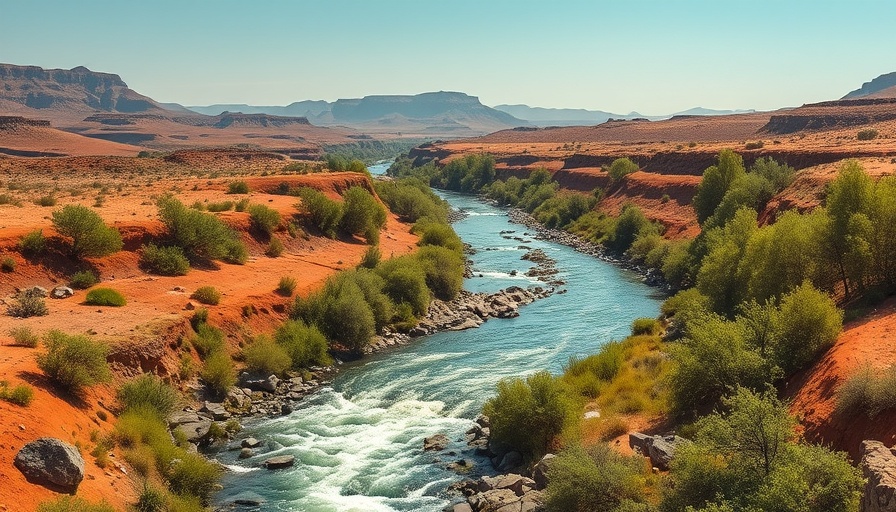
A Historic Settlement in the Texas-New Mexico Water Dispute
A significant chapter in the ongoing saga of water rights in the southwestern U.S. has reached a pivotal resolution. A historic settlement signed between New Mexico, the Department of Justice, and two irrigation districts aims to resolve a long-standing legal battle concerning the water allocation from the Rio Grande, which has been a point of contention since 2013. The settlement promises not only to stabilize the water supply for communities along the river's banks but also to create a framework for sustainable water management amid increasing climatic changes.
Implications for Farmers and Cities in the Region
The Rio Grande serves as a vital resource for farmers and municipalities across New Mexico and far West Texas. Farmers rely heavily on this water for irrigation, particularly as drought conditions have intensified. The recent agreement outlines specific irrigation management practices, which are designed to ensure equitable water distribution while also enhancing conservation efforts. Jay Ornelas, the general manager of the El Paso Water Improvement District, expressed optimism about the settlement, highlighting the long-term security it provides for farmers and the city of El Paso.
The Evolution of the Legal Dispute
The litigation emerged when Texas accused New Mexico of exploiting groundwater resources, resulting in decreased river flow, thus violating the Rio Grande Compact established in 1938. This compact fundamentally governs water usage for the three states reliant on the river—Texas, New Mexico, and Colorado. However, modern hydrology has revealed a deeper connection between aquifers and surface water, complicating historical agreements and prompting extensive legal examination.
Details of the Settlement: What’s Included?
The settlement package is multifaceted and includes several key components:
- New formulas to determine water allocation among entities.
- Provisions for New Mexico to address groundwater depletion.
- Amendments to the operating manual governing the Bureau of Reclamation's Rio Grande Project.
- Water rights transfers from New Mexico's Elephant Butte Irrigation District, ensuring both compliance with agreements and compensation for affected districts.
Environmental Context and Future Predictions
As climate change continues to affect water availability across the U.S., the settlement’s emphasis on conservation is more crucial than ever. Increased drought conditions and competing needs for water may put further strain on the system. Experts believe that adapting to these changes requires reevaluation of long-standing practices and policies that govern water usage. Moving forward, ecological sustainability will likely be a critical component of future negotiations, influencing not only legal aspects but also agricultural practices and urban planning.
Voices from the Community: Diverse Perspectives
The settlement has invoked mixed reactions, notably from agricultural stakeholders who are eager for stability, but urban residents who question how water rights distributions will play out in practice. As a professor of water law points out, it is vital to consider the geographical and economic contexts of both Texas and New Mexico in order to achieve a balanced outcome. This settlement represents a complex compromise designed to honor historical water rights while promoting more sustainable future usage.
Conclusion: The Path Forward
As the legal processes advance, local communities will need to stay informed and engaged with developments related to water rights and environmental impacts. Though the agreement brings hope for a more collaborative approach to water management across state lines, the challenges of climate change and rural-urban water politics remain at the forefront. Stakeholders on both sides of the border will need to be adaptive and prepared for future negotiations that could reshape their access to this vital resource.
It’s essential for citizens to remain engaged with ongoing water management issues to understand their implications for agriculture, urban development, and environmental sustainability.
 Add Element
Add Element  Add Row
Add Row 



Write A Comment